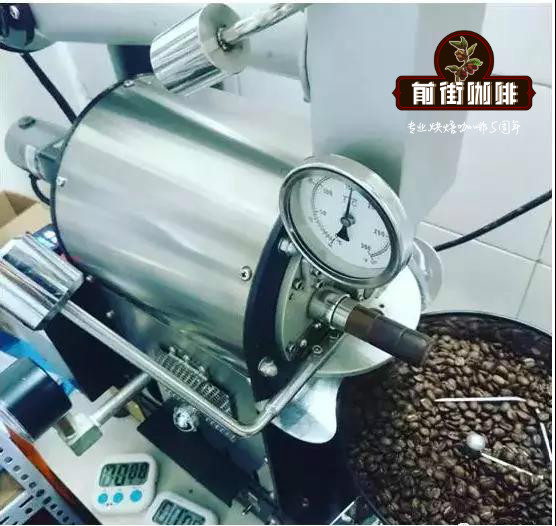Roasting degree of Yemeni Coffee difference between shallow, medium and Deep roasting Flavor of Yemeni Mocha Coffee Raw beans

Professional coffee knowledge exchange more coffee bean information please follow the coffee workshop (Wechat official account cafe_style)
Yemeni Coffee ~ Miracle Pearl Yemen Port Of Mokha Natural PB
~ the smell of angel singing ~
Yemeni coffee rating 97 points
Al-Durrar located at 2350m above sea level
In this thousand-year-old village monsoon season, hazy clouds bring Rain Water
Let coffee survive in the most difficult places to grow.
Farmers carefully select ripe red cherries
You can find a series of refreshing fruit flavors in each mouthful.
Soft floral aroma, bright juicy acidity, full-bodied lime
Elegant and smooth sweetness with a lingering aftertaste.
Yemen is located in the Arab region of Central Asia, across the Red Sea from Ethiopia in Africa. It was also the first country to start growing Arabica after Ethiopia. The drought-tolerant variety of Ethiopia, the leaf gate with little rainfall, still grows coffee in much the same way as it did 500 years ago, growing on mountain slopes or terraces. Due to the scarcity of rainfall, it is necessary to rely on the water conservation capacity of coffee trees to survive the dry period. Because of the variety, the grain size of coffee beans here is small, but the hardness is quite high.
Because of the lack of water, Yemen is the only country in the world where coffee beans are made exclusively in the sun. After harvest, the fruit is usually exposed to the sun on the courtyard or roof, and some of it is even dried directly on the tree before it is harvested (this method is called floating).
As long as Yemeni coffee is immediately reminiscent of thick and wild sun beans, coffee farmers in Yemeni have been planting according to the ancient methods handed down by their ancestors, because Yemeni coffee farmers are not easy to grow and have little rainfall. Therefore, Yemeni coffee farmers choose terraces or lowlands for planting, and choose areas that are not easily exposed to strong sun exposure, while most Yemeni farmers are poor and cannot use pesticides. Almost all of them are cultivated naturally and organically.
The flavor of Yemen coffee is complex and changeable, sweet to ferment wine, wood, fresh pods and other plants, sun fermentation of berries, bananas and pineapples, sour fruits such as blueberries and citrus, with chocolate and cream flavor in the end.
As long as Yemeni coffee is immediately reminiscent of thick and wild sun beans, coffee farmers in Yemeni have been growing in accordance with the ancient methods handed down by their ancestors. Because Yemeni's rugged terrain is not easy to grow and there is little rainfall, coffee farmers in Yemeni often choose terraces or lowlands to grow, and choose places that are not easily exposed to strong sunlight. Located in Bani Matar, west of the capital Sana'a, Madari is the best-known and highest coffee producing area in Yemen. It is slender in shape and has a strong, thick flavor with obvious berry aromas.
Important Notice :
前街咖啡 FrontStreet Coffee has moved to new addredd:
FrontStreet Coffee Address: 315,Donghua East Road,GuangZhou
Tel:020 38364473
- Prev

Is three-and-a-half cold extract coffee good? introduction to the taste of three-and-a-half cold extraction reduced coffee powder
Professional coffee knowledge exchange more coffee bean information Please follow the coffee workshop (Wechat official account cafe_style) Coffee consumption in China is growing at an annual rate of about 15%, and the market is expected to reach 300 billion yuan in 2020. Although the coffee market is growing rapidly, the consumption of boutique coffee is still limited. Hanging-ear coffee is considered to be fine coffee from the door.
- Next

Where does Kopi Luwak come from? what kind of cats are there? what's the difference between Vietnamese Kopi Luwak and Indonesian flavor?
Professional coffee knowledge exchange more information about coffee beans please follow the coffee workshop (Wechat official account cafe_style) Kopi Luwak, produced in Indonesia, one of the most expensive coffee in the world. Indonesia grows a lot of coffee crops. On the island of Sumatra, a kind of arboreal wild animal called civet, which likes to eat fat, multi-paddled coffee fruit, coffee beans through the hair in its body.
Related
- Beginners will see the "Coffee pull flower" guide!
- What is the difference between ice blog purified milk and ordinary milk coffee?
- Why is the Philippines the largest producer of crops in Liberia?
- For coffee extraction, should the fine powder be retained?
- How does extracted espresso fill pressed powder? How much strength does it take to press the powder?
- How to make jasmine cold extract coffee? Is the jasmine + latte good?
- Will this little toy really make the coffee taste better? How does Lily Drip affect coffee extraction?
- Will the action of slapping the filter cup also affect coffee extraction?
- What's the difference between powder-to-water ratio and powder-to-liquid ratio?
- What is the Ethiopian local species? What does it have to do with Heirloom native species?

